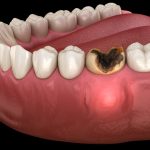Longevity of Dental Fillings: How Long Do Teeth Fillings Last?
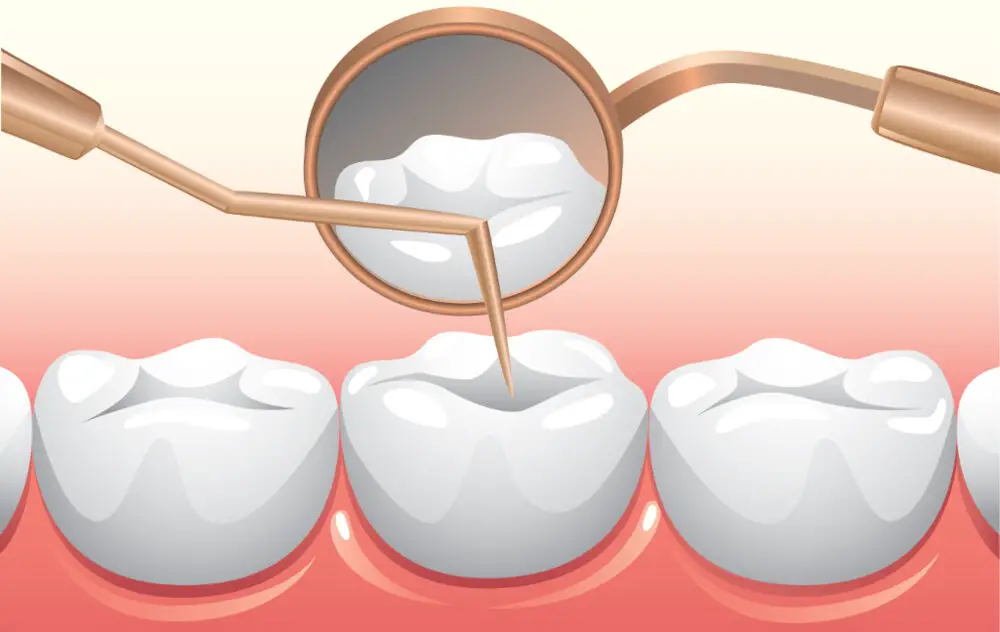
Dental fillings are a common dental procedure that aims to restore the function and structure of a decayed or damaged tooth. While dental fillings are designed to last for a long time, they are not permanent, and their longevity can vary according to several factors. Understanding the longevity of dental fillings is essential to make informed decisions about your oral health and avoid costly and inconvenient dental procedures in the future. The longevity of dental fillings depends on various factors, such as the type of filling material, the size and location of the filling, the skill and technique of the dentist, and the patient’s oral hygiene practices and lifestyle habits. Dental fillings can be made of various materials, such as amalgam, composite resin, gold, and porcelain. Each material has its unique properties, advantages, and disadvantages that affect its longevity and durability. For instance, amalgam fillings are known for their strength and durability, but they are not aesthetically pleasing and can cause tooth sensitivity. On the other hand, composite resin fillings are more aesthetically pleasing but are less durable and may require more frequent replacement.
Dental fillings are used to restore teeth that have been damaged by decay or trauma. The procedure involves removing the decayed or damaged part of the tooth and filling the cavity with a material that will prevent further decay and restore the tooth’s shape and function. The most common materials used for dental fillings are amalgam, composite resin, gold, and ceramic. These materials have different properties, such as durability, aesthetic appeal, and cost, that make them suitable for different situations. The longevity of dental fillings depends on various factors, such as the material used, the size and location of the filling, the patient’s oral hygiene habits, and the dentist’s skill and technique. Proper care and maintenance, such as regular brushing and flossing, can help prolong the lifespan of dental fillings.
Dental fillings are an essential component of maintaining oral health. They are used to repair cavities, cracks, and other types of damage that can occur to teeth. Fillings help to restore the tooth’s structure and function, preventing further decay and damage. They are also crucial in preventing the spread of infection and bacteria throughout the mouth. Without fillings, damaged teeth can lead to more severe dental issues, such as root canals or even tooth loss. Therefore, it is vital to maintain good oral hygiene practices and seek the appropriate dental care needed to ensure the longevity of dental fillings.
The purpose of the article \Longevity of Dental Fillings: How Long Do Teeth Fillings Last\ is to provide readers with an in-depth understanding of the lifespan of dental fillings. It aims to educate readers on the different types of fillings available, their advantages and disadvantages, and how to care for them to ensure longevity. The article also discusses the factors that can affect the durability of fillings, including the size and location of the filling, the material used, and oral hygiene practices. By providing this information, the article hopes to help readers make informed decisions about their dental health and to encourage them to take an active role in maintaining their fillings for as long as possible.
Factors Affecting Longevity of Dental Fillings

The longevity of dental fillings is determined by various factors such as the type of filling material used, the location of the filling, the oral hygiene of the patient, and the skill of the dentist. Dental fillings can last for several years, but their lifetime depends on the patient’s commitment to oral hygiene and regular dental checkups. The type of filling material used can also affect the longevity of the filling. For instance, amalgam fillings tend to last longer than composite fillings. However, composite fillings are more aesthetically pleasing and bond better to the tooth structure. The location of the filling also plays a role in its longevity. Fillings in low-stress areas such as the front teeth generally last longer than those in high-stress areas such as the molars. This is because the force of chewing and biting can cause wear and tear on the filling, leading to cracks or fractures. Additionally, the skill of the dentist in placing the filling can also affect its longevity. An experienced dentist who uses proper techniques and materials can ensure that the filling lasts longer and reduces the risk of complications such as decay or infection. Therefore, it is crucial to choose a qualified dentist and follow their advice on maintaining good oral health to ensure the longevity of dental fillings.
The type of filling material used in dental restorations plays a significant role in the longevity of the filling. Amalgam, composed of a mixture of metals such as silver, tin, and copper, is a commonly used material due to its strength and durability. However, its silver color may not be visually appealing, and it contains small amounts of mercury which can pose health concerns. Composite resin, made of a mixture of plastic and glass, is a tooth-colored filling material that can be matched to the natural color of the teeth. It is less durable than amalgam but offers a more aesthetically pleasing result and can be used for small to moderate-sized restorations. Other types of filling materials include gold and porcelain, which are often used for larger restorations and can last for many years with proper care. Ultimately, the choice of filling material depends on the individual’s needs, preferences, and the size of the restoration.
The size and location of dental fillings play a significant role in determining their longevity. Fillings that are larger in size and located in high-stress areas, such as the molars, may experience more wear and tear, leading to a shorter lifespan. Additionally, the type of filling material used can also impact its durability. For instance, amalgam fillings may last longer than composite fillings, especially in larger cavities. It’s essential to have regular dental checkups to monitor the condition of your fillings and replace them promptly if necessary, ensuring the best possible lifespan for your dental restorations.
Maintaining good oral hygiene practices is essential to ensure the longevity of dental fillings. Brushing your teeth twice a day with fluoride toothpaste, flossing daily, and rinsing with an antiseptic mouthwash can prevent tooth decay and gum disease. It is also important to avoid sugary and acidic foods and drinks that can erode tooth enamel and lead to cavities. Regular dental check-ups and cleanings can detect any issues early on and prevent the need for more extensive dental work in the future. By taking care of your teeth and practicing good oral hygiene, you can help ensure that your dental fillings last as long as possible and maintain a healthy smile.
Eating and drinking habits play a crucial role in the longevity of dental fillings. Consuming sugary drinks and foods, as well as acidic drinks like soft drinks, fruit juices, and energy drinks, can erode the enamel and weaken the filling material. It is essential to maintain a healthy diet and reduce the intake of sugary and acidic foods and drinks. Drinking plenty of water can help to wash away food particles and reduce the risk of decay. It is also advisable to avoid chewing hard foods, such as ice, which can cause the filling to crack or break. Following a proper oral hygiene routine, including brushing twice a day, flossing, and regular dental check-ups, can help to prevent decay and ensure the longevity of dental fillings.
The frequency of dental checkups plays a significant role in the longevity of dental fillings. It is recommended to visit the dentist at least twice a year for routine checkups and cleanings. During these visits, the dentist can identify any early signs of dental decay or damage to existing fillings. If left untreated, these issues can lead to more extensive dental work and potentially shorter lifespans for fillings. Additionally, regular dental cleanings help to remove plaque and tartar buildup, which can contribute to tooth decay and gum disease. By maintaining a consistent schedule of dental checkups, individuals can increase the lifespan of their dental fillings and improve their overall oral health.
Lifespan of Different Filling Materials
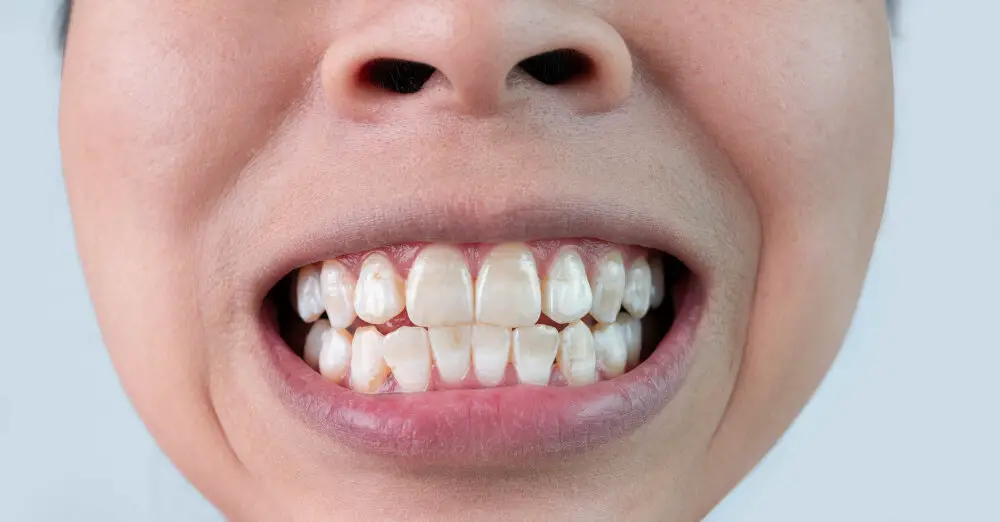
Dental fillings are an essential component of restorative dentistry. They help to repair damage caused by cavities, cracks, or trauma to teeth. However, the lifespan of different filling materials can vary depending on various factors such as the location of the tooth, the size of the cavity, and the type of filling material. Amalgam fillings, also known as silver fillings, are among the most durable and long-lasting filling materials. They can last up to 10-15 years or even longer with proper care and maintenance. Amalgam fillings are made of a mixture of metals, including silver, copper, tin, and mercury, which makes them strong and resistant to wear and tear. Composite fillings, also known as tooth-colored fillings, are another popular filling material. They are made of a mixture of plastic and glass materials and can be color-matched to the natural color of teeth, making them an aesthetically pleasing option. However, composite fillings are not as durable as amalgam fillings and may need to be replaced more frequently. On average, composite fillings last around 5-7 years, but with proper care and maintenance, they can last up to 10 years. Ultimately, the lifespan of dental fillings depends on various factors such as the type of filling material, the location of the tooth, and the patient’s oral hygiene habits. It is important to maintain regular dental check-ups to ensure the longevity and functionality of dental fillings.
Amalgam fillings, also known as silver fillings, have been used for over 150 years to restore decayed teeth. They are made up of a mixture of metals, including silver, tin, copper, and mercury, which is used as a binding agent. Although they are not as aesthetically pleasing as other types of dental fillings, amalgam fillings are known for their durability and strength. They can withstand the pressure of chewing and can last up to 15 years or more with proper care. Despite the concerns about the use of mercury in amalgam fillings, the American Dental Association (ADA) and the World Health Organization (WHO) have deemed them safe for use in dental restorations. However, many patients opt for other types of fillings, such as composite resin or porcelain, due to their more natural appearance.
Composite fillings are a popular and effective type of dental filling used to repair teeth damaged by decay, cracks, or fractures. They are made of a tooth-colored resin material that blends in seamlessly with the natural color of the tooth. Composite fillings are durable and long-lasting, with a lifespan of up to 10 years or more with proper care. They are also less invasive than other types of fillings, as they require less drilling and removal of healthy tooth structure. However, composite fillings may not be suitable for larger cavities or areas of the mouth that are under heavy pressure from biting and chewing. Overall, composite fillings are a great option for restoring the health and appearance of damaged teeth.
Gold fillings, also known as gold inlays or onlays, have been used in dentistry for over a century. They are made of a mixture of gold, copper, and other metals, and are known for their strength and durability. Gold fillings are particularly suited for teeth that undergo a lot of chewing force, such as molars. They are also more resistant to wear and corrosion than other types of fillings. While gold fillings may not be as aesthetically pleasing as tooth-colored fillings, their longevity and durability make them a popular choice for those looking for a long-lasting solution for their dental needs. However, gold fillings are more expensive than other types of fillings, which can be a factor for some patients.
Ceramic fillings, also known as porcelain or dental ceramic, are a popular choice for dental restorations due to their natural-looking appearance and durability. These fillings are created to match the color of the surrounding teeth, making them virtually indistinguishable from natural teeth. The high strength of ceramic fillings makes them resistant to wear and tear, and they are less likely to crack or chip over time. Additionally, ceramic fillings do not contain any metal, making them an excellent option for individuals with metal allergies or sensitivities. With proper care and maintenance, ceramic fillings can last for 10-15 years or more, making them a long-lasting and reliable choice for dental restorations.
Signs of Failing Dental Fillings
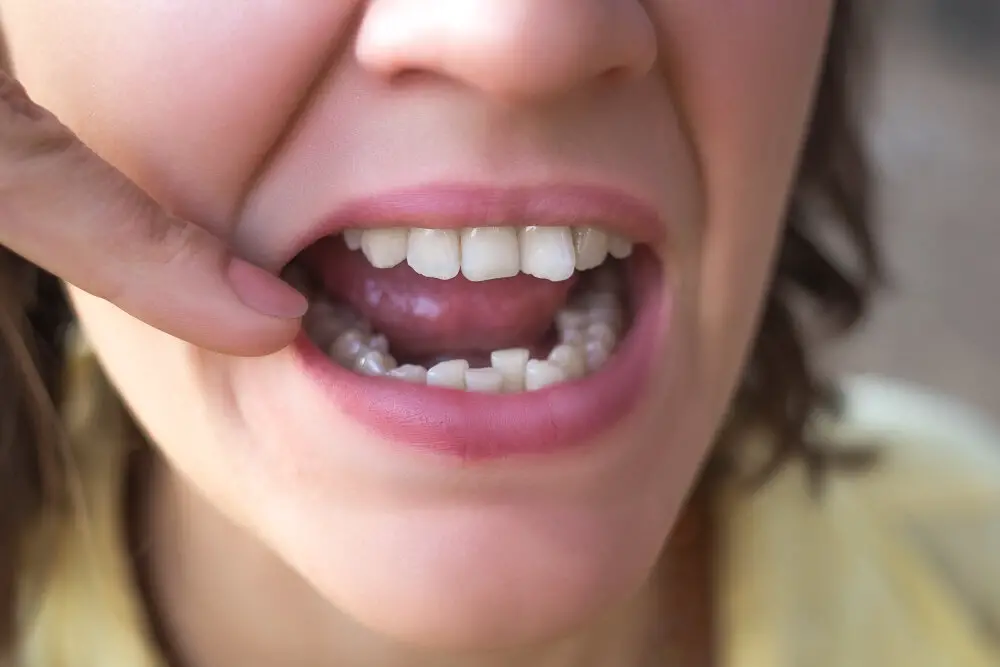
Dental fillings are a common restorative dental procedure used to repair teeth that have been damaged by decay. However, like any dental procedure, fillings don’t last forever. Over time, fillings can become damaged, worn down, or even fall out completely. It’s important to recognize the signs of failing dental fillings so that you can get them replaced before they cause further damage to your teeth. Some common signs of failing dental fillings include sensitivity to hot or cold temperatures, pain when biting down, rough or jagged edges on the filling, visible cracks or chips in the filling, and discoloration or staining around the filling. If you are experiencing any of these symptoms, it’s important to schedule an appointment with your dentist as soon as possible. Ignoring a failing filling can lead to further decay, infection, and even tooth loss. Your dentist will examine the filling and determine the best course of action, which may include replacing the filling with a new one or opting for a more extensive restoration, such as a dental crown. By addressing failing dental fillings early on, you can ensure the longevity of your teeth and prevent more extensive dental work down the line.
Sensitivity to hot and cold is a common issue experienced by individuals with dental fillings. It can be caused by a variety of factors, including the type of filling material used, the size and location of the filling, and the overall health of the tooth. While some sensitivity is normal immediately after a filling procedure, if it persists or worsens over time, it may be a sign of a problem. In some cases, sensitivity can indicate a leak or crack in the filling, which can lead to further decay and damage to the tooth. Regular dental check-ups and proper oral hygiene can help to prevent these issues and ensure the longevity of dental fillings.
One of the most common signs of dental filling problems is pain or discomfort while biting or chewing. This can be caused by a variety of factors, including tooth decay, damage to the filling material, or an uneven bite. When the filling is damaged or worn down, it can expose the sensitive inner layers of the tooth, leading to pain and discomfort. In some cases, the filling may need to be replaced to restore proper function and alleviate discomfort. Regular dental check-ups and good oral hygiene practices can help to prevent dental filling problems and ensure that your fillings last as long as possible.
Visible cracks or fractures in dental fillings are a common problem that can negatively impact the longevity of a filling. These cracks can be caused by a variety of factors, including chewing on hard objects, grinding or clenching the teeth, and changes in temperature. When these cracks occur, they can allow bacteria to penetrate the filling and cause further decay in the tooth. It is important to have any visible cracks or fractures in dental fillings addressed as soon as possible to prevent more serious dental problems from developing. Regular dental check-ups can help to identify and address these issues before they become more problematic.
Discoloration or staining is a common issue that patients experience with dental fillings. Over time, fillings may become discolored due to exposure to various substances like coffee, tea, red wine, and tobacco. Poor oral hygiene can also lead to staining and discoloration of fillings. While it does not necessarily indicate a problem with the filling’s function, it can be unsightly and detract from the appearance of the smile. Fortunately, staining can be addressed with professional cleaning and polishing of the affected filling. Patients should also maintain good oral hygiene practices and avoid consuming staining substances to prolong the life and appearance of their dental fillings.
Recurring cavities are a common problem faced by many patients who have undergone dental fillings. Despite the advancements in dental technology and the use of high-quality filling materials, some patients experience recurrent tooth decay around their fillings. This can happen due to several reasons, including poor oral hygiene, consuming sugary and acidic foods, and a weakened tooth structure. The bacteria in the mouth can also contribute to the formation of cavities. To prevent recurring cavities, it is essential to maintain good oral hygiene, follow a healthy diet, and visit the dentist regularly for check-ups and cleanings. In some cases, the dentist may need to replace the filling or recommend a more extensive dental procedure to address the issue.
Maintenance and Care for Dental Fillings

Dental fillings are a common dental procedure used to restore teeth that have been damaged by decay or trauma. While dental fillings are designed to last for many years, proper maintenance and care is essential for their longevity. The best way to ensure your dental fillings last as long as possible is by maintaining good oral hygiene practices such as brushing twice a day, flossing daily, and visiting your dentist regularly for check-ups and cleanings. This will help prevent decay and further damage to the tooth, which could lead to the need for additional fillings or even more extensive dental work. Additionally, it is important to avoid habits such as teeth grinding or chewing on hard objects, which can cause damage to the filling and surrounding tooth structure. If you do grind your teeth, your dentist may recommend a mouthguard to protect your teeth and fillings. It is also important to be mindful of your diet, avoiding sugary and acidic foods and drinks that can contribute to tooth decay and erosion. By following these simple tips, you can help ensure the longevity of your dental fillings and maintain a healthy, beautiful smile for years to come.
Proper oral hygiene practices are essential for maintaining healthy teeth and gums, which can increase the longevity of dental fillings. Brushing twice a day with fluoride toothpaste and flossing daily can help remove plaque and bacteria that can lead to tooth decay and gum disease. It’s also important to limit sugary and acidic foods and drinks, as they can erode tooth enamel and weaken fillings over time. Regular dental check-ups and cleanings can also help detect and address any issues before they become more serious, ensuring that fillings last as long as possible. By adopting these practices, individuals can keep their teeth healthy and fillings intact for many years to come.
Regular dental checkups are crucial for maintaining the longevity of dental fillings. Even the best dental fillings can fail without proper care and attention. During routine checkups, a dentist can identify any issues with existing fillings and address them before they become more severe. These appointments also allow for preventative care, such as cleaning and addressing areas of decay before a filling is necessary. Neglecting regular dental checkups can lead to more extensive and costly dental work in the future, as well as potentially compromising the longevity of existing fillings. It is essential to prioritize routine dental care to ensure the health and longevity of your teeth and any dental work that has been done.
One of the key factors in maintaining the longevity of dental fillings is avoiding hard and sticky foods. Hard foods such as nuts, hard candy, and ice can cause the filling to crack or break, compromising its integrity and leading to further dental issues. Sticky foods, such as caramel or chewing gum, can pull the filling out of place or stick to it, making it difficult to clean properly. It is also important to note that consuming sugary or acidic foods and drinks can weaken the filling and increase the risk of decay. To ensure the longevity of dental fillings, it is best to avoid these types of foods and maintain a healthy diet that promotes good oral health.
Limiting sugary and acidic drinks is an essential step towards maintaining the longevity of dental fillings and overall oral health. Beverages like soda, energy drinks, and sports drinks are loaded with sugar and acids that can erode the tooth enamel and cause decay. Consuming these drinks frequently can lead to the formation of cavities and weaken the dental filling. It’s crucial to drink plenty of water and limit the intake of sugary and acidic drinks to preserve the lifespan of dental fillings and keep the teeth healthy and strong. Additionally, regularly brushing and flossing the teeth, and scheduling routine dental checkups can help prevent dental problems and ensure the longevity of dental fillings.
Protecting teeth from injury or trauma is crucial to maintaining a healthy smile and prolonging the lifespan of dental fillings. Mouthguards, which are custom-made to fit the individual’s teeth, are the most effective way to prevent dental injuries during sports or other physical activities. Additionally, avoiding chewing on hard objects, such as ice or pen caps, can prevent chipping or cracking of teeth. Regular dental check-ups can also help identify any potential issues early on and allow for appropriate preventative measures to be taken. By taking these precautions, individuals can protect their teeth from injury and trauma, ensuring the longevity of their dental fillings and overall dental health.
In summary, the longevity of dental fillings depends on various factors such as the materials used, the size and location of the filling, and the patient’s oral hygiene. Amalgam fillings are known for their durability and can last up to 15 years, while composite fillings may only last up to 10 years. However, proper oral care, including regular brushing and flossing, can significantly increase the lifespan of fillings. It’s also essential to schedule biannual dental checkups to monitor the condition of fillings and address any issues promptly. In some cases, fillings may need to be replaced due to wear and tear or decay, and it’s crucial to consult with a dentist for proper treatment and care.
Regular dental checkups are crucial for maintaining good oral health and preventing dental problems. It’s recommended to have a dental checkup at least twice a year or more frequently if you have certain dental conditions. During a dental checkup, a dental professional can detect early signs of dental problems such as cavities, gum disease, and oral cancer. Not only that, but regular dental checkups can also help to prevent future dental problems by identifying and addressing issues before they become more serious. Additionally, dental professionals can provide advice on how to improve your oral hygiene and recommend appropriate treatments to maintain healthy teeth and gums. Therefore, it’s important to prioritize regular dental checkups to promote good oral health and overall wellbeing.
Maintaining good oral hygiene practices is crucial not only for the longevity of dental fillings but also for overall oral health. Brushing teeth twice a day, flossing regularly, and using mouthwash can prevent dental decay and gum diseases, which can lead to the need for fillings. It is also recommended to limit sugary and acidic food and drinks, as they can erode tooth enamel and weaken fillings over time. Additionally, visiting the dentist regularly for check-ups and cleanings can help identify any issues early on and prevent the need for extensive dental work. By prioritizing good oral hygiene practices, individuals can not only extend the lifespan of their fillings but also promote a healthy and beautiful smile.
In conclusion, the longevity of dental fillings depends on various factors, including the type of filling material used, the location of the filling, and the extent of decay or damage. However, regular dental check-ups and maintaining good oral hygiene can significantly increase the lifespan of dental fillings. It is also recommended to avoid consuming hard or sticky foods that can damage the fillings. In case of any discomfort or sensitivity, it is essential to consult a dentist immediately to prevent further damage and decay. Overall, taking proper care of dental fillings can ensure a healthy and long-lasting smile.
Conclusion
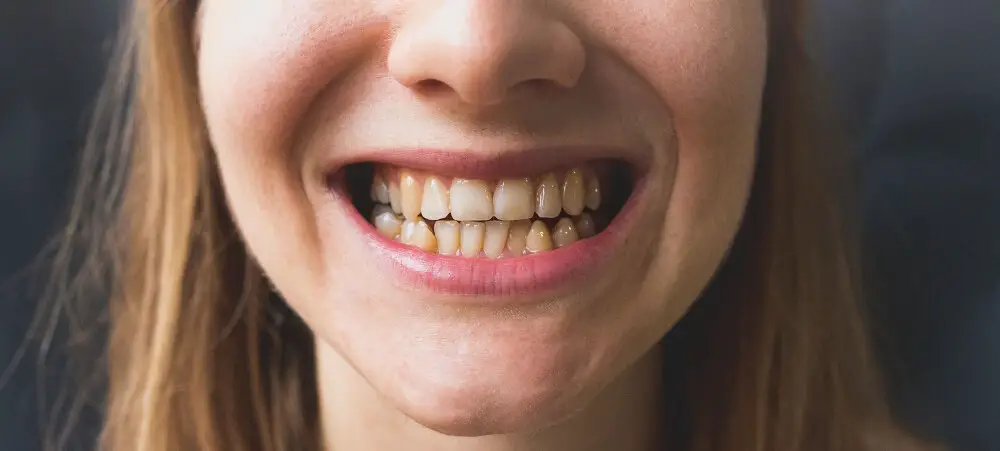
In conclusion, the longevity of dental fillings depends on various factors such as the type of filling material used, the size and location of the filling, and the patient’s dental hygiene practices. While dental fillings are not meant to last a lifetime, they can last for several years with proper care and maintenance. It’s essential to visit the dentist regularly for check-ups and replacements if necessary. Overall, the lifespan of dental fillings can vary, but with good oral hygiene practices and regular dental care, patients can enjoy a healthy and long-lasting smile.



